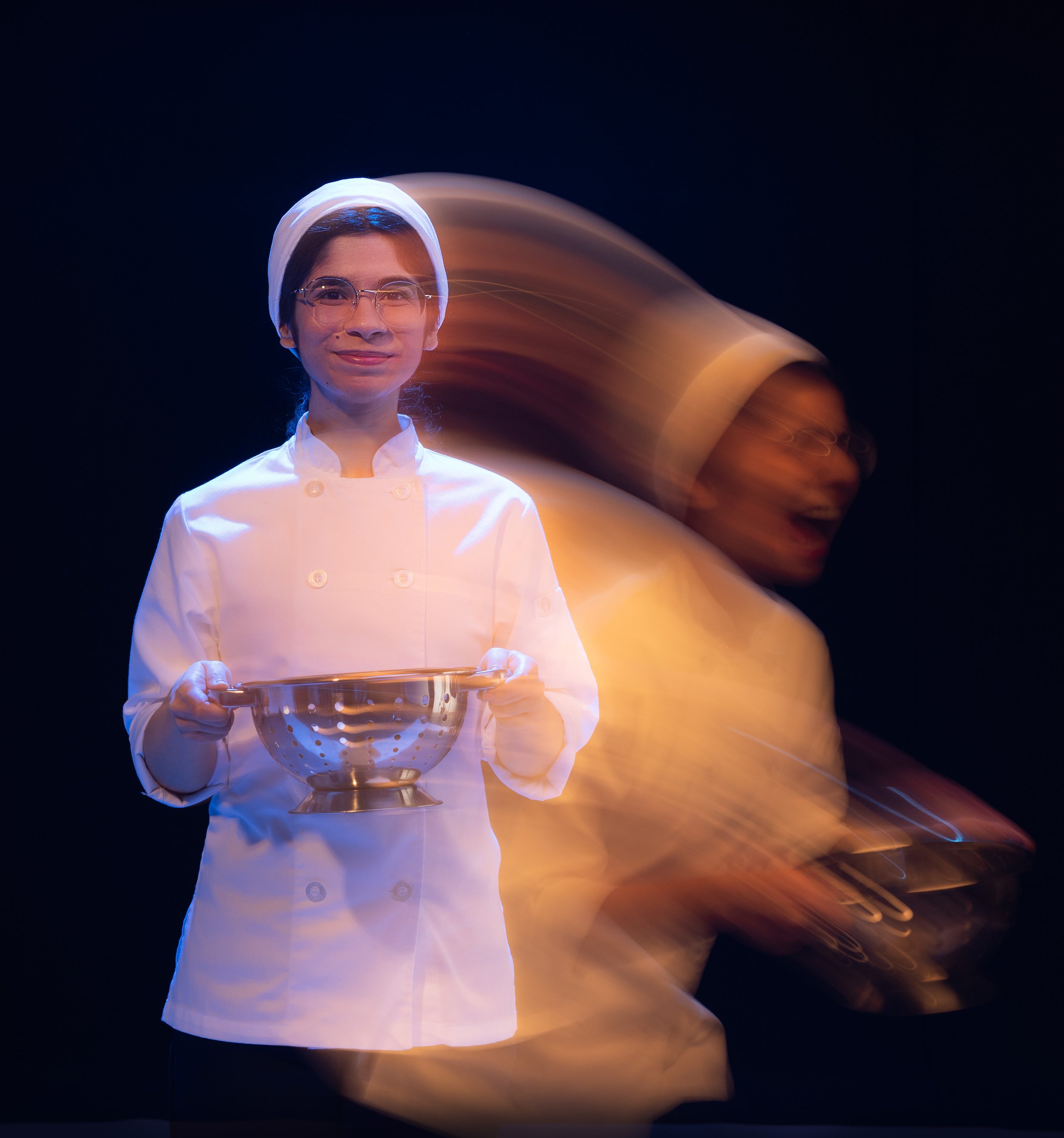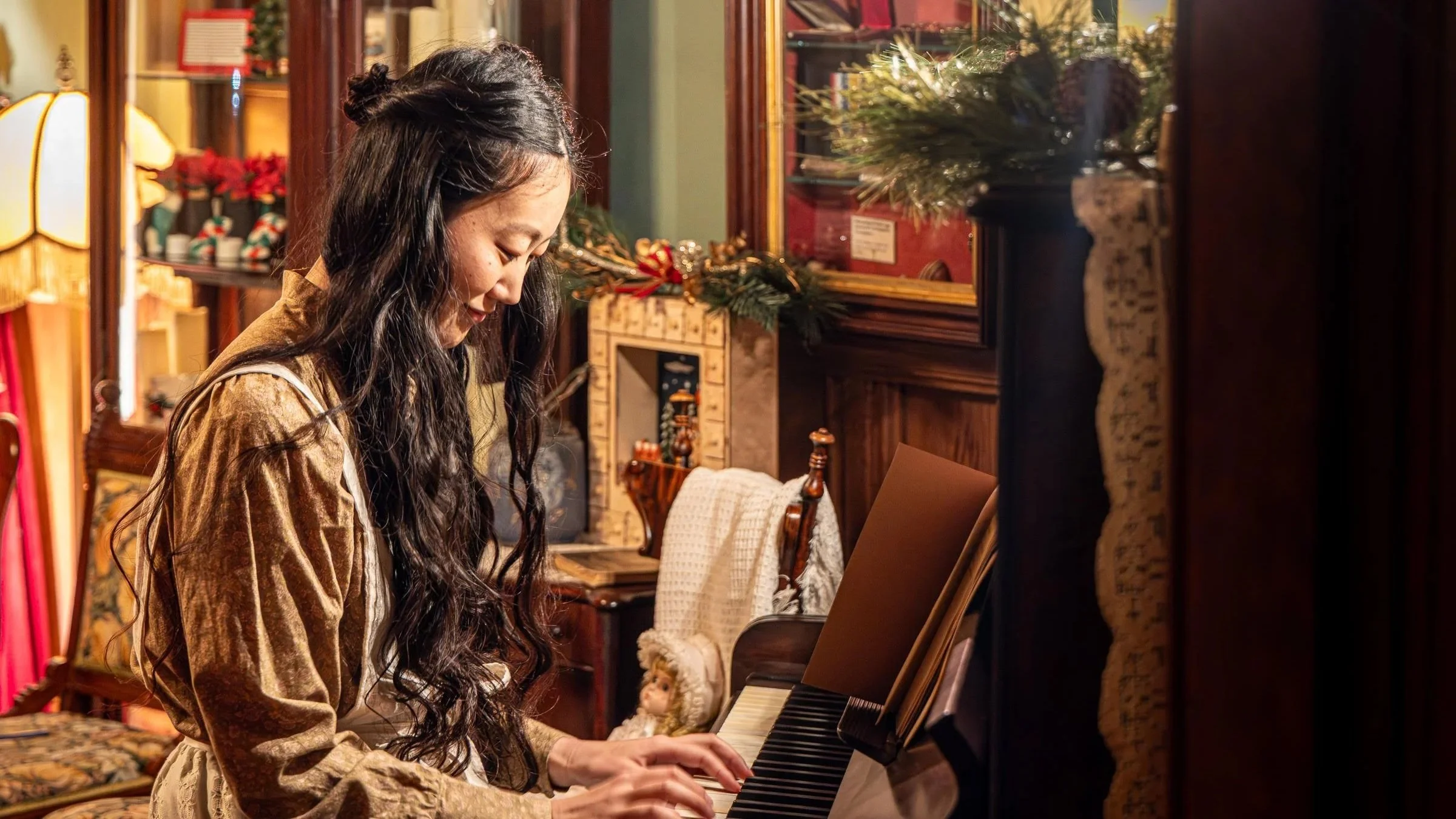Theatre review: Studio 58's The Kitchen is a rare chance to see elaborately choreographed work get cooking
Immersive set and busily moving cast bring to life restaurant culture and relevant questions around working to live—or living to work
Janavi Chawla in The Kitchen. Photo by Emily Cooper
Studio 58 presents The Kitchen until April 9
IN THE DIRECTOR notes for Studio 58’s production of Arnold Wesker’s The Kitchen, Amiel Gladstone discusses how this play is rarely done due to its size. “Enjoy this special thing—33 actors in a big bold play, full of life,” he writes. And that’s indeed what this play is—a big, bold play, full of life, and an absolute stellar opportunity for Studio 58’s students to sink their teeth into interesting, varied, and complicated characters. It’s a chance for the emerging actors to showcase their talents in a work that has the production qualities and scale usually reserved for Broadway musicals.
When audiences enter the Studio 58 theatre, they come face-to-face with the show’s set—a re-creation of a restaurant kitchen, designed by Sophie Tang. Under Gladstone’s direction, there’s an abstract style to the show, so any action with food or pots and pans is mimed. In line with that, there are no stoves or ovens on the set. But there’s glassware, portion cups, a coffee station, and enough cutlery to serve a wedding. In fact, cutlery dangles from the ceiling, shining like Christmas tinsel over the winding maze of sleek counterspace below, all of it lit in an ethereal glow by Tang’s lighting design. Tang’s visual creation sets the mood before the play even begins—we’re in a mysterious and quirky setting where absurdity abounds.
As the house lights dim, we see a young woman tucked into a nook on house left, playing a cello. The first action onstage is of an overnight kitchen employee lighting the gas stoves for the day. We see kitchen staff—then later, front-of-house staff—arrive for work; the kitchen members sleepily prepare for another intense day, and the front-of-house staff busily chat away to each other as they scurry in. Right from the start, this production captures the genuine pulse of a restaurant.
The play is cleverly separated into two sections—lunch and dinner shifts. Throughout both, we get to know the restaurant’s diverse, colourful staff, as well as witness friendships grow and personalities clash. Central to the story is the romance between kitchen employee Peter (Brian Martinez) and front-of-house staffer Monique (a shared role between Trinity Richardson and Zoë Autumn).
Martinez shines, bringing the character of Peter to life with larger-than-life gusto, grit, and likability. Last seen in Studio 58’s A Chorus Line as Paul, Martinez has shown impressive versatility, and audiences are in for a treat when he hits professional stages. Autumn pairs well as Monique, exuding caution in carrying out her romance with Peter, but showing affection nonetheless. There’s an engaging sincerity about Samuel Walmsley-Byrne’s portrayal of Dimitri. Hikari Terasawa hams it up with some great comedic moments. And there’s a very pleasing moment when the staff are on their break between shifts and Marielle Ortinez sings Lhasa de Sela’s El Desierto with sultry passion.
Director Gladstone has set the show in Vancouver and adjusted some character elements to reflect the demographics of the city. He’s also shifted the show’s original time period of the late ’50s. The cast has modern mannerisms and attire, and at one point dances to Bruno Mars’ 24K Magic. And yet the radio that that song plays on is vintage 1950s; similarly, the way the restaurant runs is also completely time-stamped from that era, with servers marching into the kitchen to yell their orders to staff. While Gladstone may have intended for all this to add to a postmodern, interpretive artistic quality of the show, it felt out of sync.
The choreography, however, works effectively—one of the most memorable moments of the show being the height of the lunch rush, where choreographer Amanda Testini has staged what appears to be an endless army of servers stomping through a chaos-erupted kitchen. There’s a grand-scale-nightmare effect to this scene that’s transfixing. And there’s also a touching sequence when a homeless man played by Ethan DeHoog walks into the kitchen asking for food, and Martinez’s character shows him compassion.
Despite the mismatch of the story’s era and how the show is presented, Gladstone still successfully communicates Wesker’s central tension around capitalism versus personal fulfillment. Born out of the socialist movement of post-World War II, The Kitchen examines the dehumanizing impact of industrialized labour—something clearly evident in the chaotic lunch rush scene, where the servers march through the kitchen like robots. The concept of dreams is constantly suggested by Peter, and among his coworkers, he’s one of few who hasn’t been broken down enough to stop setting goals for life outside the kitchen. It’s a theme that’s still, sadly, relevant in today’s society.
And so, even after all these years, Wesker’s The Kitchen still strikes a chord and perhaps serves as a reminder to examine the sacrifices one makes to life. Do you work to live or live to work? The show is a great opportunity to enjoy the talents of the Studio 58 students, especially the 16 graduating students who get to go out on a bang with this elaborate spectacle of a play. Encompassed in Tang’s brilliant playground of a set, and with the flavourings of Testini’s choreography, The Kitchen is a savoury and unique delight.













